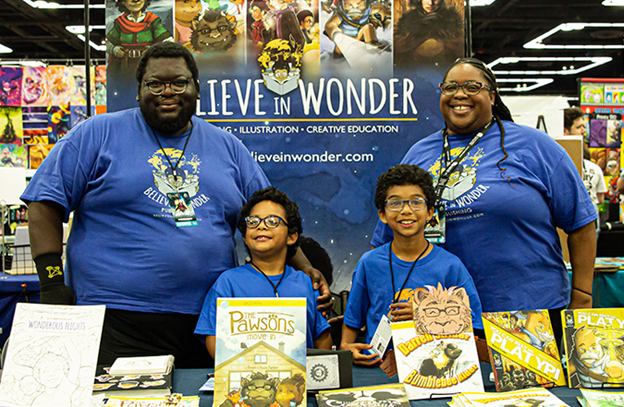
Long before COVID, children’s lives were increasingly spent online. Researchers estimate that 70 percent of us spend more than two hours a day on social media alone. If you’re a parent, you might be thinking: “Only two hours! My son is on his phone a lot more than that!”
There are many well documented dangers created by children’s spending excessive amounts of time online. Children in foster care are often at a greater risk because they may have less impulse control and feel a greater need to connect with others and search for belonging.
There are many well documented dangers created by children’s spending excessive amounts of time online. Children in foster care are often at a greater risk because they may have less impulse control and feel a greater need to connect with others and search for belonging.
Risks posed online to children
- Poor mental health. Research has shown that spending too much time online can cause social isolation, anxiety, depression, loneliness, and low self-esteem in children.
- Cyber-bullying. This can include peers circulating explicit photos or other harmful or mean content about a classmate that causes embarrassment.
- Negative feedback loop. Computer algorithms can reinforce thoughts and behaviors. When anyone starts ingesting media that is racist or otherwise negative, soon they will see it everywhere online.
- Unauthorized or unhealthy contact with birth family or past connections. While social media can be a great way for children to locate and stay in touch with birth family members, it can also connect them with people who do not have their best interest in mind.
- Danger to personal safety. At the extreme, engaging with anonymous strangers in social media—including through video game platforms—exposes children of all ages to adults who might harm and exploit them.
Ted Thiele, a digital forensic detective with the FBI, says the pandemic only exacerbated the problem:
“During COVID times, we experienced an increase in the number of reports of cyber safety concerns to national tip lines,” Thiele said. “The NCMEC (National Center for Missing and Exploited Children) reported a 97.5 percent increase in online enticement reports between 2019 and 2020.”
Danger ahead—or just cruising along?
Mental health professionals encourage parents to consider questions like these when trying to figure out if screen time is damaging their children:
- Is my child numbing out or are they connecting with friends and like-minded peers? Do the interactions seem positive and productive?
- On the other hand, are they becoming withdrawn and not communicating with existing friends and others in person?
- Is spending time online making your child feel better or making them irritable?
- What is your child not doing by being on social media? Is it interfering with other activities?
- Have your child’s patterns of behavior changed or shifted—even something like their eating habits? Often parents have to take a step back to recognize that there is—or isn’t—a problem.
- Is your child trying to hide their device from you or using it during times or in places where they are not supposed to use it?
What’s a parent to do?
Your kids know more than you do; technology is changing at an astounding rate. You don’t want to spend hours learning about the latest apps and games, and keeping your child away from their phone seems like a constant battle!
To limit kids’ screen time and keep them safe, experts suggest a mixture of tried-and-true parenting techniques, seeking out resources online, and maybe finding a lifeline.
- Focus on prevention before it’s time for intervention. Detective Thiele likes to compare teaching digital citizenship to driving a car, emphasizing that it’s a conversation that should start before a child gets online, if possible. “When kids are little, you talk with them about importance of wearing a seatbelt and about obeying traffic rules. Then you slowly work them up to the point that they are ready to get a learner’s permit, and eventually drive safely without supervision. The same can be true of learning to function safely online.”
- Have your child teach you. Ask them to show you how to make a TikTok video. Read privacy statements together. You’ll share the responsibility of understanding internet privacy together, and you’ll feel better because you’re gaining understanding.
- Replace, don’t remove. Taking a device away by itself doesn’t work. Rather, replace the time your child would spend with that device with an activity that they might not do otherwise. The big caveat is that for children in foster care, social media may be their lifeline to birth family and provide a needed sense of comfort. What’s a luxury for some children may be a necessity for a child who was in care.
- Discuss “netiquette” with your child. Children, especially those who struggle with boundaries, often don’t realize why sharing private information or even images of themselves, could be a big risk. Talk with your child about appropriate ways to communicate online with friends, teachers, and other trusted adults and what information they should and should not share online.
- Consistently model healthy relationships with technology. Agree upon house rules that apply to everyone, e.g., no phones at the table or in private areas, like the bathroom. When establishing those rules with older foster and adopted children, be sure to acknowledge the rules their birth families had established, and perhaps talk with their birth family to create a shared understanding.
- Utilize parental controls. An increasing number of tools exist that allow parents to block, monitor, and filter content and track children’s online activities and location. Commonsense Media offers a fairly comprehensive list of tools and functions, suggesting that if you use these tools, do so in partnership with your children—do not spy on them! As a parent, you have to balance your need for information with your child’s rights.
- Call for a lifeline! This could be a mentor through a youth-serving organization or a savvy teen or young adult you know who can take you through social media platforms.
- Keep the lines of communication open. No matter how many tools you employ or how savvy you attempt to become, Detective Thiele believes that the best way to keep kids safe is through open communication: “Even though it’s my job, I struggle to keep up with developments! Technology is always going to be a step or three ahead of us as parents. Trust and communication are two things we can rely on. The goal is that when your child sees something threatening or is being bullied, they come to you.”
Helpful resources
- The National Center for Missing and Exploited Children website is a wealth of information for parents and children of all ages. Their Netsmartz online safety education program provides age-appropriate videos and activities to help children to be more aware of potential online risks and able to make safer choices on- and offline. And they have a lot of great information for parents about online enticement, including risk factors and red flags.
- InternetSafety.org. Their “Internet Safety 101” teaching series educates parents, educators, and others about the dangers children encounter online and offers a “rules and tools” workbook that talks about parental controls and other safety measures.
- Family Online Safety Institute. While their primary function is to work with Facebook, Amazon, Instagram, and others to further parental controls, they also offer information on good digital parenting, including in video interviews with families on the topic.
- Commonsense Media. A nonprofit offering entertainment and technology recommendations and advice to help parents and teachers safely navigate the digital world.
- StopBullying.gov. A publicly funded website and blog providing information about what bullying (including cyberbullying) is, who is at risk, and how parents, teachers, and others can prevent and respond to bullying.


